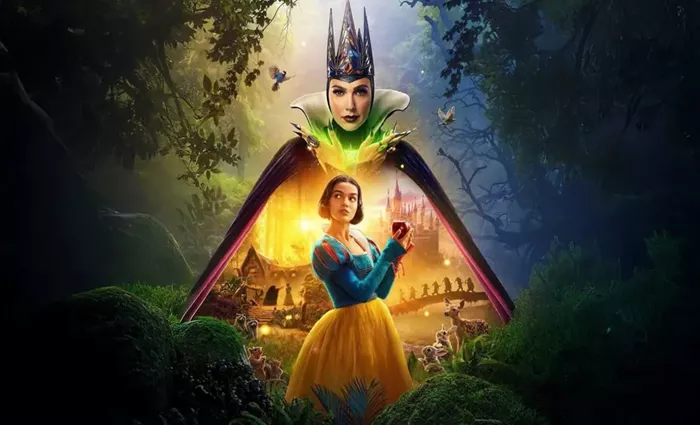From the unsettling CGI rendering of the seven dwarves—reminiscent of the infamous Polar Express—to the garish Evil Queen’s outfit, the film’s visual choices were jarring. The story aimed to reimagine the classic fairy tale, positioning Snow White (Rachel Zegler, Y2K) as a proactive heroine fighting for her kingdom after meeting Jonathan (Andrew Burnap, The Front Room). This modern twist promised a fresh take, diverging from the original’s passive princess and nameless prince. Yet, Snow White’s agency quickly evaporates when she succumbs to the poisoned apple, nullifying the film’s initial promise.
The original Snow White climaxed with the dwarves triumphantly defeating the Evil Queen—an exhilarating moment of narrative payoff. The remake had an opportunity to fuse this energy with its new plotline, crafting a monumental finale where Snow White herself could have led the charge. Instead, her awakening culminates in a disarmingly anticlimactic scene: she serenades the castle guards into allegiance, proving that an enchanting soprano can outmatch evil more than any epic battle. This tonal shift feels incongruous and diminishes the stakes.
The film’s most glaring flaw lies in its disconnect between fantasy and reality. Although branded as live-action, many elements, including the seven dwarves, were created through CGI, employing facial scanning and puppetry rather than real actors. Against a hyper-stylized CGI forest glowing with artificial light, the dwarves’ plastic-like appearances starkly clash with the surroundings, displacing Snow White in her own story. Meanwhile, the human cast’s costumes evoke a cheap party aesthetic, further undermining immersion.
This remake epitomizes a broader crisis in the film industry: Disney’s push to merge live-action realism with fantasy narratives strips away the enchantment that defined its legacy. The company’s reliance on CGI and spectacle has overshadowed the artistry and storytelling that once made its movies resonate.
The magic Disney once conjured was born in animation, not live action. In 1937, Snow White and the Seven Dwarfs transformed Hollywood as the first feature-length hand-drawn animated film, transporting audiences into a world of delicate artistry and wonder. Walt Disney’s painstaking three-year effort elevated animation from disposable shorts to cinematic storytelling. The film’s success paved the way for Disney’s golden era of animated classics—from Fantasia to The Little Mermaid—all rooted in meticulous craftsmanship and visionary art.
Disney continued to celebrate animators, even spotlighting them at Disney-MGM Studios’ Magic of Disney Animation exhibit, where park visitors could witness artists breathe life into drawings. Yet this reverence for artistry faded by 2004, coinciding with the company’s retreat from hand-drawn animation in favor of CGI and live-action remakes. This shift, despite commercial successes like Frozen, came with a cost: a loss of the tangible, human touch that made Disney’s earlier films timeless.
John Lasseter, former Pixar chief creative officer, once criticized hand-drawn films as excuses for poor storytelling. Ironically, Disney’s new live-action ventures—including the recent Snow White—expose a different problem: a prioritization of profit over creativity, leading to uninspired filmmaking.
The latest Snow White remake not only flopped at the box office—grossing just $43 million against its massive budget—but also sparked controversies overshadowing the film itself. When actors’ off-screen reputations interfere with the story’s escape, the magic fractures further, distancing audiences from the characters they once adored.
Disney’s halted production of the live-action Tangled remake—an ironically recent CGI film—signals growing recognition that chasing profit through quick live-action remakes is unsustainable. The essence of what made Disney movies magical—hand-drawn artistry, immersive storytelling, and heartfelt creativity—is fading.
For those of us who grew up captivated by classic animated fairy tales, the longing remains: a wish for hand-drawn animation to return, for films that offer true escapism, and for movies that celebrate the power of art. The magic of a movie is more than spectacle; it is the artist’s soul transferred frame by frame, brush stroke by brush stroke, enchanting audiences across generations.

